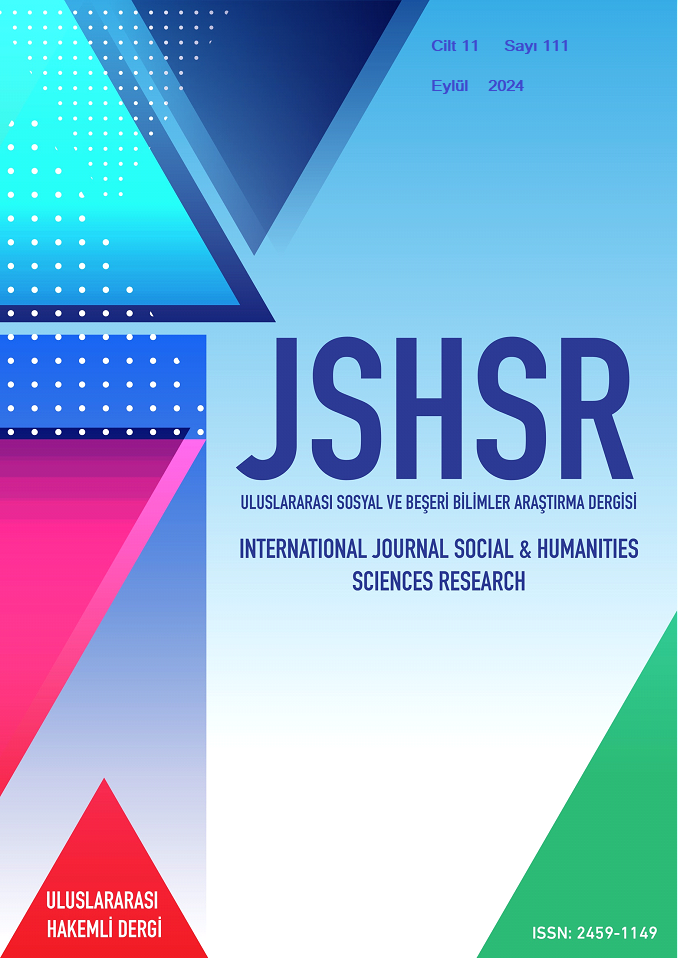Fen Bilimleri Öğretmenlerinin Elektromanyetik Kirlilik Konusundaki Farkındalık Düzeyleri
DOI:
https://doi.org/10.5281/zenodo.13880795Anahtar Kelimeler:
elektromanyetik kirlilik, Farkındalık düzeyi, Fen bilimleri öğretmenleri, Çevresel bilinç, EğitimÖzet
Günümüzde hızla ilerleyen teknolojiyle birlikte elektromanyetik alanlar (EMA) ve elektromanyetik kirlilik, çevresel ve sağlık açısından önemli bir sorun haline gelmiştir. Elektronik cihazlar günlük yaşamda yaygın olarak kullanıldığından, elektromanyetik kirliliğin potansiyel sağlık riskleri doğurması toplumun bu konuda bilinçlenmesini gerektirmektedir. Özellikle fen bilimleri öğretmenlerinin bu konudaki farkındalık düzeyleri, öğrencilerine doğru bilgileri aktarabilmeleri açısından kritik öneme sahiptir. Bu çalışmanın amacı, Ankara ili Etimesgut ve Çankaya ilçelerinde görev yapan 141 fen bilimleri öğretmeninin elektromanyetik kirlilik konusundaki farkındalık düzeylerini belirlemek ve bu düzeyleri etkileyen faktörleri incelemektir. Araştırmada anlık tarama modeli kullanılmış ve nicel veriler Dalgıç'ın (2019) "Elektromanyetik Kirliliğe İlişkin Farkındalık Ölçeği" ile toplanmıştır. Analizler sonucunda, devlet okullarında görev yapan öğretmenlerin özel okullarda görev yapanlara göre daha düşük farkındalık düzeyine sahip olduğu; cinsiyetler arasında anlamlı bir fark bulunmadığı; ancak 22-25 yaş aralığındaki öğretmenlerin diğer yaş gruplarına göre daha yüksek farkındalık düzeyine sahip olduğu tespit edilmiştir. Bu sonuçlar, genç öğretmenlerin teknolojik gelişmelere daha yatkın olmaları ve daha güncel bilgilere sahip olmaları ile açıklanabilir. Öğretmenlerin mesleki gelişim programlarına katılımlarının teşvik edilmesi, elektromanyetik kirlilik ve diğer çevresel konularda bilgi ve farkındalık düzeylerinin artırılması açısından önemlidir.
Referanslar
Akgün, Ö. E., Büyüköztürk, Ş., Çakmak, E. K., Demirel, F. & Karadeniz, Ş. (2011). Bilimsel araştırma yöntemleri. Pegem.
Bergqvist, U., & Vogel, E. (2004). Gender Differences in Perception and Awareness of Electromagnetic Fields. Bioelectromagnetics, 25(5), 370-374. DOI: 10.1002/bem.10191
Bütüner, Ü. O. & Sert, Ş. (2022). Düzce ilinde sigorta acentelerinin hizmet kalitesi üzerine bir araştırma. Süleyman Demirel Üniversitesi İktisadi ve İdari Bilimler Fakültesi Dergisi, 27(4), 523-546.
Büyüköztürk, Ş. (2002). Faktör analizi: Temel kavramlar ve ölçek geliştirmede kullanımı. Kuram ve Uygulamada Eğitim Modeli, 32, 470-483.
Büyüköztürk, Ş. (2020). Sosyal bilimler için veri analizi el kitabı. Pegem Akademi.
Cevahir, E. (2020). SPSS ile Nicel Veri Analizi Rehberi. Kibele Yayınları.
Çakır, A. (2014). Faktör analizi [Yayınlanmamış Doktora Tezi], İstanbul Ticaret Üniversitesi, Sosyal Bilimler Enstitüsü, İstanbul.
Dalgıç, G. (2019). Öğretmen adaylarının elektromanyetik kirliliğe ilişkin farkındalık düzeylerinin çeşitli değişkenler açısından incelenmesi [Yayınlanmamış Yüksek Lisans Tezi], Gazi Üniversitesi, Eğitim Bilimleri Enstitüsü.
Ervural, B. Ç. (2020). Varyans Analizi (ANOVA) ve Kovaryans Analizi (ANCOVA) İle Deney Tasarımı: Bir Gıda İşletmesinin Tedarik Süresine Etki Eden Faktörlerin Belirlenmesi. BŞEÜ Fen Bilimleri Dergisi,7(2), 923-941.
George, D. & Mallery, P. (2003). SPSS for Windows step by step: a simple guide and reference. Allyn & Bacon.
Karasar, N. (2016). Bilimsel araştırma yöntemi. Nobel.
Kenar, İ., Turgut, S., & Gökalp, M. S. (2014). Determination of preservice teachers’ electromagnetic pollution awareness / Öğretmen adaylarının elektromanyetik kirlilik farkındalıklarının belirlenmesi. Eğitimde Kuram ve Uygulama, 10(4), 1077-1090. https://doi.org/10.17244/eku.62800
Kim, J.-H., & Choi, S.-W. (2010). Awareness of Electromagnetic Pollution in Public and Private School Students. Environmental Health Perspectives, 118(6), 768-772. DOI: 10.1289/ehp.0901231.
Köklü, N., Büyüköztürk, Ş. & Çokluk-Bökeoğlu, Ö. (2006). Sosyal bilimler için istatistik. Pegem A.
Seitz, H., Stinner, D., Eikmann, T., Herr, C., & Röösli, M. (2005). Awareness and Risk Perception of Electromagnetic Fields Among University Students. Journal of Radiological Protection, 25(3), 369-378. DOI: 10.1088/0952-4746/25/3/007
Simko, M., & Mattsson, M.-O. (2004). Electromagnetic Field Awareness Among Students in Different School Types. Bioelectromagnetics, 25(4), 316-321. DOI: 10.1002/bem.10175.
WHO (World Health Organization). (2016). Electromagnetic Fields and Public Health: Fact Sheet. https://www.who.int/news-room/fact-sheets/detail/electromagnetic-fields-and-public-health.
Wiedemann, P. M., & Schütz, H. (2005). Public Perception of Electromagnetic Fields and Wireless Technology: A Cross-Cultural Study. Risk Analysis, 25(5), 1123-1134. DOI: 10.1111/j.1539-6924.2005.00663.x
İndir
Yayınlanmış
Nasıl Atıf Yapılır
Sayı
Bölüm
Lisans
Telif Hakkı (c) 2024 International Journal of Social and Humanities Sciences Research (JSHSR)

Bu çalışma Creative Commons Attribution 4.0 International License ile lisanslanmıştır.


